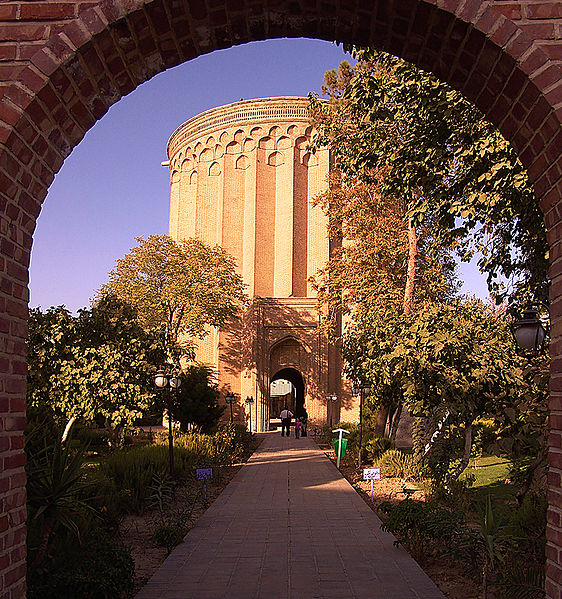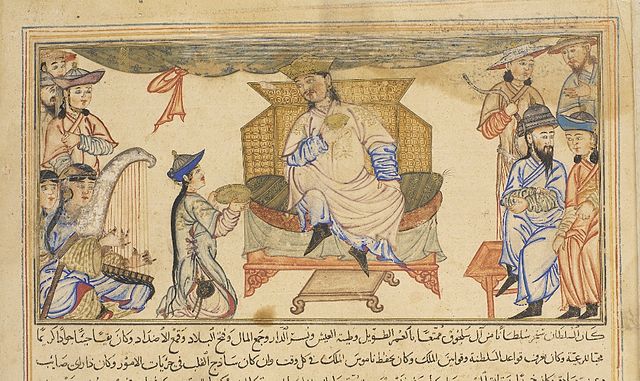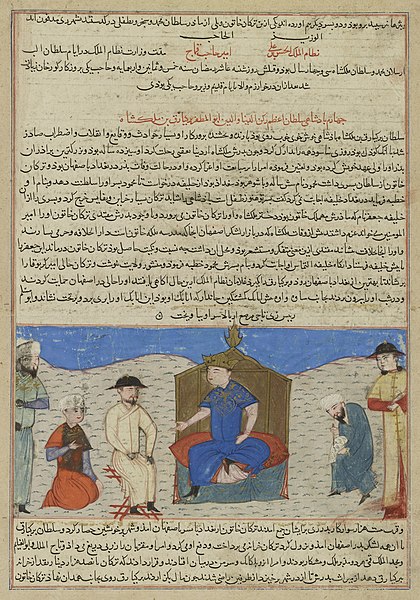Atabeg, Atabek, or Atabey is a hereditary title of nobility of Turkic origin, indicating a governor of a nation or province who was subordinate to a monarch and charged with raising the crown prince. The first instance of the title's use was with early Seljuk Turks who bestowed it on the Persian vizier Nizam al-Mulk. It was later used in the Kingdom of Georgia, first within the Armeno-Georgian family of Mkhargrdzeli as a military title and then within the house of Jaqeli as princes of Samtskhe.
Badr al-Din Lu'lu' was atabeg for the Zengid dynasty from 1211 to 1234. Kitāb al-aghānī fronstispiece, Mosul, 1218-1219. Vol IV. Cairo, Egyptian National Library, Ms Farsi 579
The Seljuk Empire, or the Great Seljuk Empire, was a high medieval, culturally Turco-Persian, Sunni Muslim empire, established and ruled by the Qïnïq branch of Oghuz Turks. It spanned a total area of 3.9 million square kilometres from Anatolia and the Levant in the west to the Hindu Kush in the east, and from Central Asia in the north to the Persian Gulf in the south.
The Toghrol Tower in the city of Ray in Iran, which serves as the tomb of the first Seljuk ruler Tughril I
15th-century French miniature depicting the combatants of the Battle of Manzikert in contemporary Western European armour
Ahmad Sanjar seated on his throne, from the 14th-century Jami' al-Tawarikh
Sultan Barkiaruq, the Seljuk ruler during the First Crusade, from the c. 1425 Persian manuscript of Hafiz-i Abru's Majma' al-Tawarikh, Yale University Art Gallery





